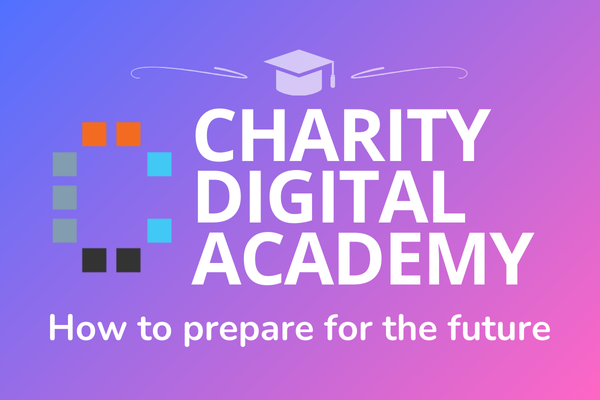Insights
INSIGHTS
All Topics
My Account
Best charity and council partnerships
Charities and councils are successfully working well together to improve people’s lives despite their budgets being squeezed
Austerity measures under Conservative-led governments since 2010 have hammered local authority budgets.
According to the Institute of Fiscal Studies there was a real terms cut of 55% in central government funding to council coffers between 2010 and 2020.
This has had a knock-on effect for charities as their contracts and grants from local authorities have been decimated.
But despite this bleak economic picture charities and councils have still been able to work successfully together in recent years to meet their shared desire to support people.
Funding for such partnerships may even be more forthcoming in future years, following Labour’s first budget in 2024.
Chancellor of the Exchequer Rachel Reeves announced an extra £1.3bn for councils over the the next financial year and a further £1bn to improve special educational needs support, which is a significant demand on meagre local government resources.
To help charity and council leaders form partnerships, guidance has been produced by the Local Government Association (LGA), alongside the National Association for Voluntary and Community Action (NAVCA).
Relationship building
Practical advice from the LGA and NAVCA’s guidance includes relationship building between the two central figures in these partnerships – council officers and leaders at local charity infrastructure organisations.
Their close working can help ensure commissioning processes are improved so funding is more evenly distributed and can meet local demand quickly.
Wider trust building across council and charity workforces is also advised, so each side understands their shared and contrasting strengths, expectations, and limitations.
Honest and clear communication is needed between charities and councils to respond quickly to local needs and so that sometimes difficult but necessary conversations can take place.
Councils also need to recognise the threat of power imbalances, as the partner with more resources and power locally.
Charities also need to recognise that the swift, flexible actions they can often easily take may take longer within the political, decision-making structure of local government.
Here we look at some examples where councils and charities have acted on such relationship building advice to form successful partnerships.
Helping asylum seekers in Barrow in Furness
Charities and council representatives, initially from Cumbria County Council and then Westmoreland and Furness Council which formed in May 2022, have been working together to effectively support the housing needs of asylum seekers.
Residents at a newly opened asylum contingency hotel in Barrow in Furness needed support but for many local charities and the council this was a new area of work.
To ensure the best support could be found and effectively coordinated the council and local charity infrastructure organisations held frequent meetings focused on problem-solving and building relationships.
This resulted in support being coordinated by Furness Multicultural Community Forum, a small organisation that supports people from diverse backgrounds and seeks to build community cohesion.
This group was instrumental in being able to liaise with other community organisations who could help asylum seekers.
Support provided included staging activities in the hotel and helping the residents orientate to living in the UK, with a focus on community volunteering, as well as through sports and cooking events.
Improving young people’s mental health in Sandwell
Councils have a statutory duty to support children and young people in their area, while charities often have greater expertise in offering specific support, particularly on issues such as mental health.
The partnership between Sandwell Metropolitan Borough Council and Sandwell Council of Voluntary Organisations (SCVO) is a strong example of how charities and councils can work together to support the emotional wellbeing of children.
This is especially important since the pandemic, when lockdown and missing school impacted young people’s mental health.
Through the link up the SCVO distributed £1 million in government mental health funding to charities and groups for up to £40,000 to support children. It also talked to schools and charities about specific mental health challenges locally.
Evaluation of the funding found isolation and anxiety levels reduced among local young people through funded projects. Confidence, self-esteem, resilience, and child protection also improved.
The partnership has helped to strengthen long term links between charities and the council as well as local schools, says the LGA.
Helping hard to reach communities in Cambridge
Charities and Cambridge City Council work successfully together on measures to tackle health inequality in the city.
This has included co-producing an equalities toolkit for local charities and working together on specific projects to support young people and families in financial difficulty.
This partnership was cemented in the aftermath of the pandemic when the council worked with infrastructure group Cambridge CVS to help boost vaccinations among hard-to-reach groups, including young people.
Among organisations involved is Cambs Youth Panel, to ensure the voice of young people was being heard around issues linked with vaccination.
The partnership succeeded following the pandemic, the LGA found, because its “primary aim was about breaking down barriers to vaccination and wider healthcare using non-traditional methods of promoting health interventions.”
“It also led to improvements in wellbeing and mental health. Any increase in vaccination uptake was a byproduct of this focus.”
More on this topic
Recommended Products
Recommended Products
Featured Products
21 Feb 2025by Ioan Marc Jones
How charities stopped centring service users
Our Events
Charity Digital Academy
Our courses aim, in just three hours, to enhance soft skills and hard skills, boost your knowledge of finance and artificial intelligence, and supercharge your digital capabilities. Check out some of the incredible options by clicking here.



















